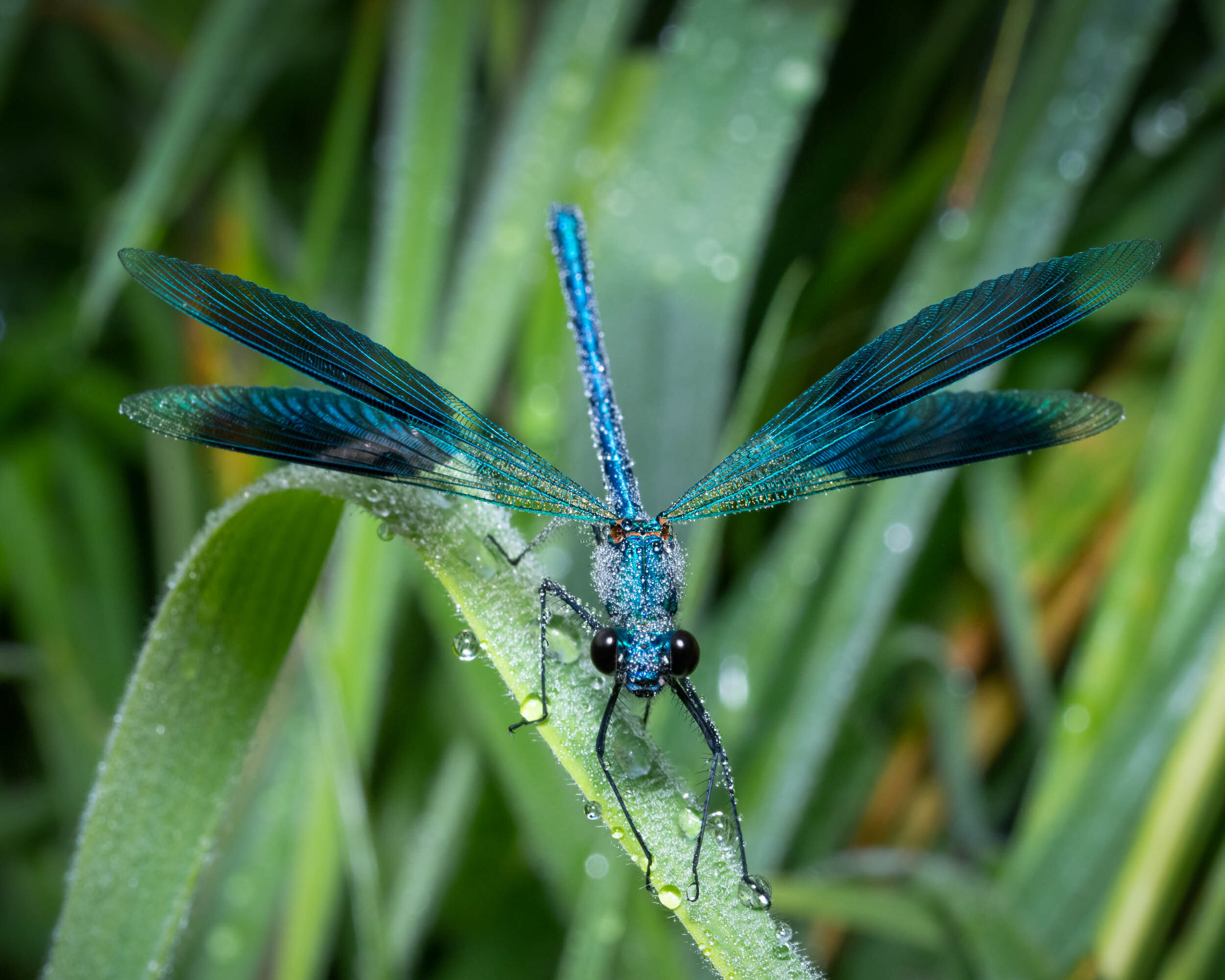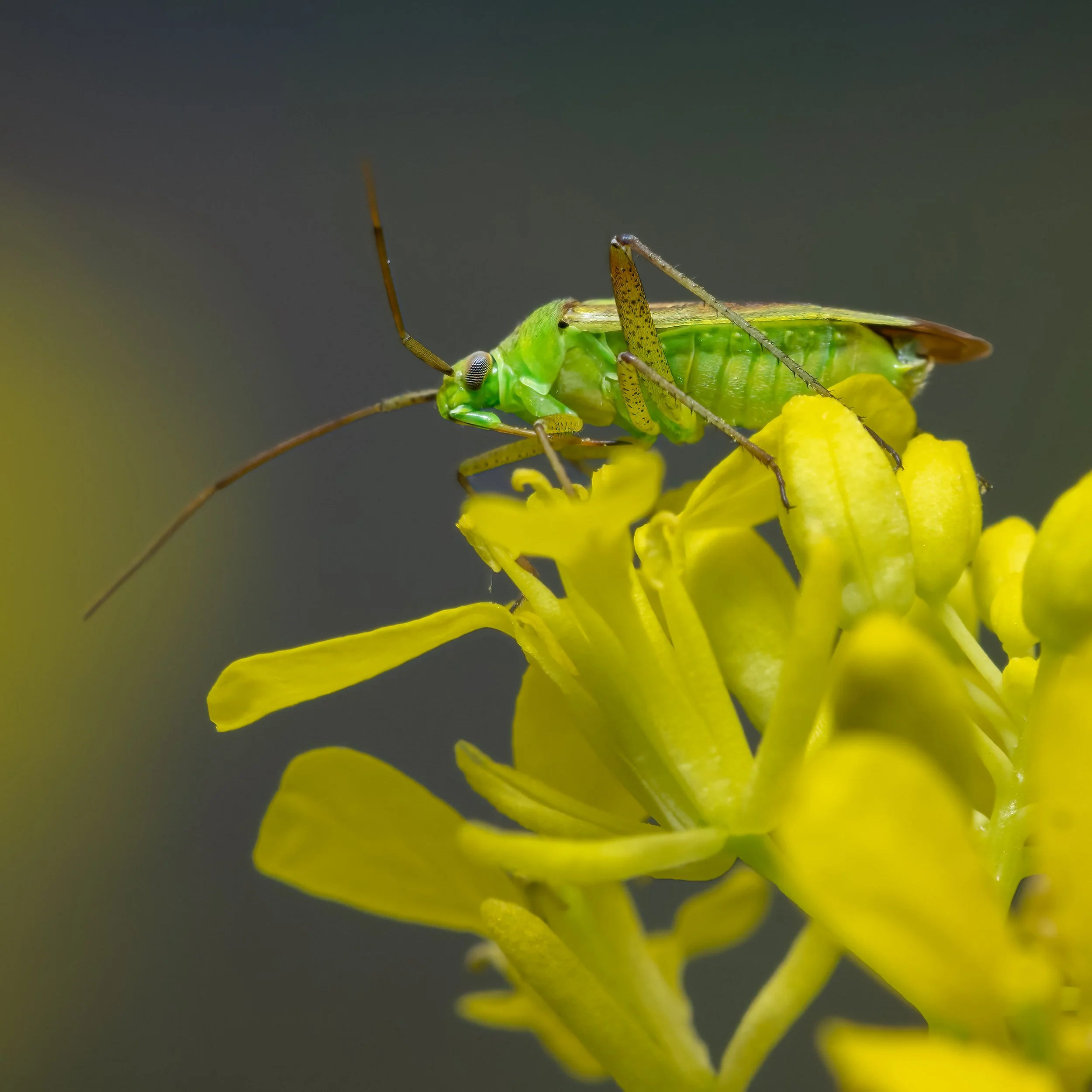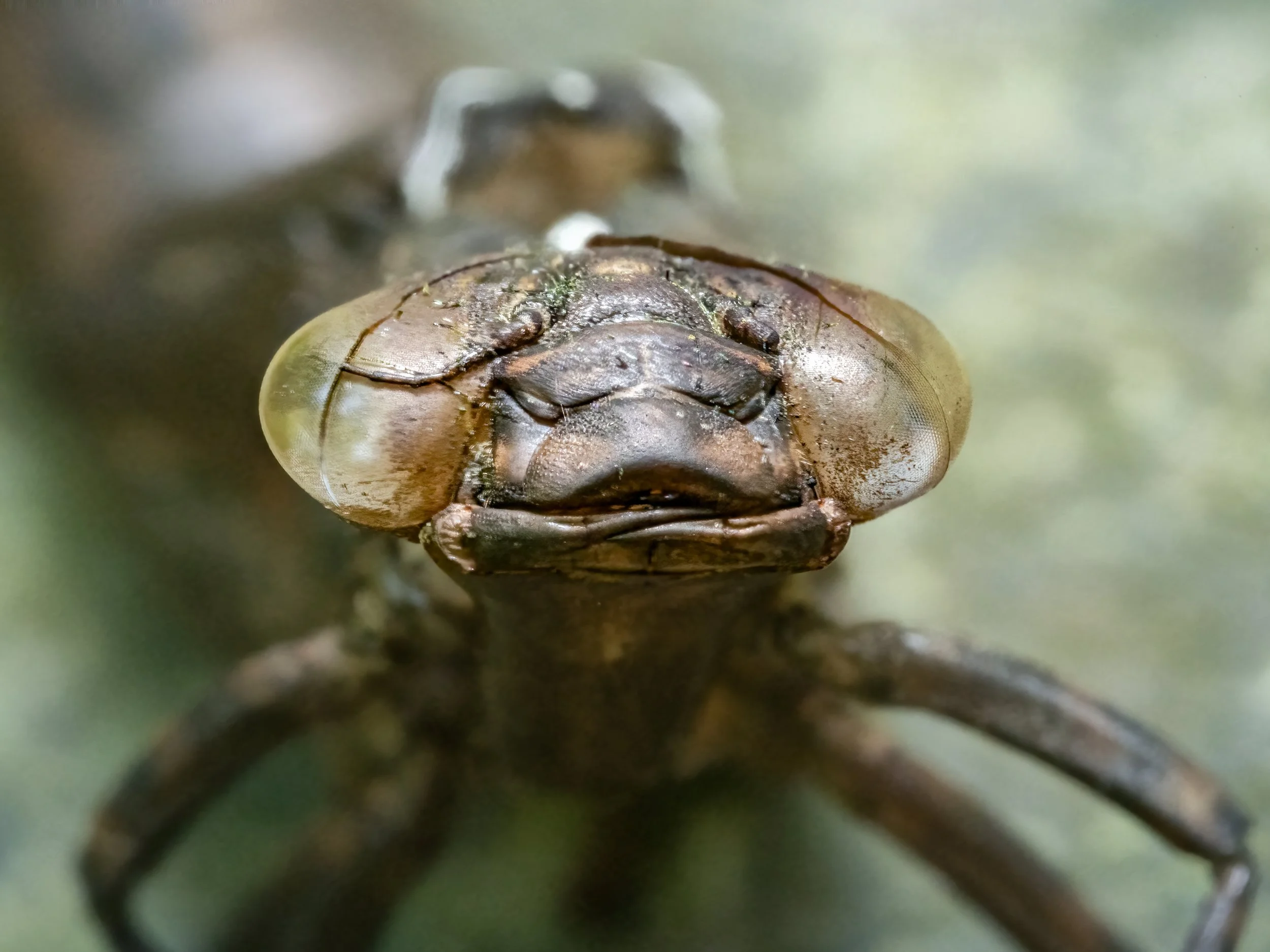INSECTS AND SMALL CREATURES
“I turned to the teeming small creatures that can be held between the thumb and forefinger: the little things that compose the foundation of our ecosystems, the little things, as I like to say, who run the world”
This has to be one of the most beautiful moths found in the UK - the Mint Moth. It’s as if the red and yellow parts have been sewn onto a black background. The eyes are nicely in focus here in this image taken in my garden in Hounslow in around 2018. Like many of the photos in this section, I have used a Tamron 90mm macro lens. Even in bright sunlight it can be necessary to add a diffused flash light - the extreme magnification afforded by the macro lens greatly reduces how much light gets onto the camera sensor. The diffuser will ensure that there are no harsh shadows, and the secret is to get the right balance of natural light and flash “fill”.
An Emperor dragonfly in flight. Taking pictures of dragonflies in flight is an altogether tricky endeavour. Of course, settings need to be correct, which means that the shutter speed needs to be a miniscule 1/3000 of a second if you want to “freeze” the movement of the wings. But following these creatures which move very fast and almost never in a straight line is almost impossible, and then they are so small that the camera autofocus will usually not lock on to the dragonfly during the split second that it is in the cross-hairs. So success comes quite rarely and with much patience. Very occasionally a dragonfly will hover in a particular place, above a particular part of the water, and when that happens you can be ready and get the shot if it lingers for a good half second or more. Dragonflies are amongst the most efficient hunters of any creature on earth, with c. 95% success rate. Their two sets of wings work in different modes, out of phase with each other or in unison, for example, and this means they can move in any direction including backwards, and change direction wiht lightning speed. The Emperor is Britain’s largest dragonfly. This image was taken at the National Botanic Garden of Wales in Carmarthenshire.
This is a pair of, I believe, Broad-bodied Chasers, seen on a river bank in Newcastle Emlyn, Carmarthenshire. I’ve managed to get a sharp focus on both dragonflies, and the green background complements their own golden-brown colour.
The wasp spider is so-called not just because heh colour of its markings resemble those of a wasp. The spider has these markings to imitate a wasp and thus frigthen away potential predators. It is actually harmless. There were still touches of dew on both the spider and its web when I took this image on some common land in West London, which definitely enhances the image.
Common Blue damselflies at it, on the surface of a pond at the Wetland Centre in Barnes, West London. Although technically somewhat imperfect, I have included it for the dramatic moment that it captures.
A great time to photograph damselflies and dragonflies is at dawn on a dewy morning. They look fantastic, as do the leaves on which they are resting, because of the water droplets which adorn them. And what is more, they will not move at all until the sun has come up enough to dry their wings completely, which definiteoy makes photogrphing them easier! This is a demoiselle, taken at Denham Country Park near Hillingdon.
A crab spider hiding on a flower, waiting to ambush, poison and paralyse its prey. The crab spider does not use a web, but I have seen a series of its victims, some bigger than it, hung up with a web-like substance like clothes on a washing line: it is a macabre sight. Their disguise is excellent, and some of them can change their colour to adapt to their surroundings. On more than one occasion I found a crab spider only by seeing the dead prey round about, and only later saw the spider itself, so well was it blended into its surroundings. An image like this will need at least to have the eyes very sharply in focus, and a spider’s multiple eyes are always fascinating to us humans! Iwanted the viewer to feel that they had come face to face with tis crab spider, so I had to have the camera on the same level as the creature. Photo taken on common land in West London.
An unidentified beetle climbing from one hogweed floret to another. I’ve tried to look this one up which I saw in my garden in Carmarthenshire, but to no avail. It slightly resembles a soldier beetle, but I don’t believe it is one. Again, natural light was enhanced with diffused flash.
An unidentified bee interested in loosestrife growing by the banks of Afon Teifi.
I don’t know what this is, but I’m pleased with the image: lots of sharp detail especially in the eye. I think it was a good choice to be looking up to the insect. I shall try to find out what it is called.
The exoskeleton of a nymph, left behind when the dragonfly itself emerges. This was left behind on a reed growing in one of my ponds, and I think it is a southern hawker. I’ve had five of these emerge this year 2025, and the first time it’s happened since I made my first pond two years ago. I wanted an extreme close-up of this, to emphasize its strange and alien appearance. There are many nymphs of various kinds now in both of my ponds, so I hope next year to be able actually to witness the emergence of the dragonfly or damselfly.
Mating common blues on the wing. I’m very pleased to have caught this and have both damselflies in focus. Bedfont Lakes near Heathrow.
I can’t identify this properly, or even know if it a kind of wasp or bee or hornet. Could it be a Mason wasp? I love how it is furling around the flower with its tail almost touching its mouth.
Hoverflies on a hogweed floret. I have hogweed in my garden and it is NOT dangerous and not to be confused with giant hogweed. My hogweed has had hundreds of pollinators of various kinds feeding on it this year. So if people kill the hogweed, the pollinators will die too, just as if people kill ragwort, the Cinnabar moths will die, along with dozens of other species which rely on it exclusively. In this image the hoverfly on the left is a different type to the other two. Experts can differentiate between about 280 different species in the UK. All I know is that they are definitely very photogenic, especially on this hogweed plant.
A type of crane fly, despite its slightly wasp-like appearance. A question of adopting the design of something more dangerous, to avoid being attacked. Evolution in practice! This was found in my garden in Carmarthenshire, and I loved the iridescence on the wings.














